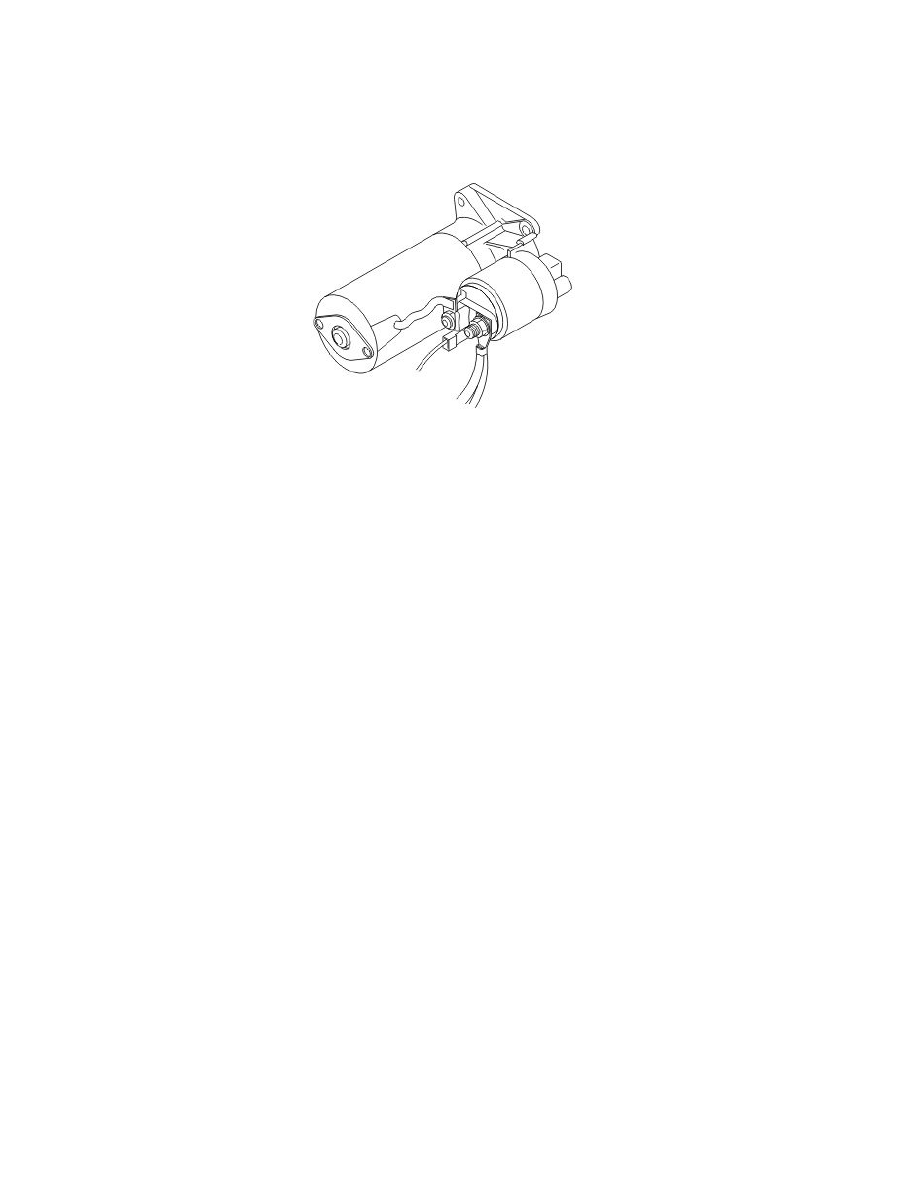V50 L5-2.4L VIN 39 B5244S7 (2005)

Starter Motor: Description and Operation
System Overview
System overview
General
This documents describes the principles of starter motor design and function, irrespective of the make.
The purpose of the starter motor (6/25) is to turn the engine at start-up. The starter motor is positioned on the cylinder block side towards the
transmission. A solenoid forces a pinion to engage with the gear ring on the flywheel / carrier plate of the engine. When the engine starts and the engine
speed exceeds the starter motor speed, the pinion disengages. This prevents the starter motor over-revving.
This type of starter motor is equipped with permanent magnets instead of field winding.
The starter motor gives the greatest torque at low rpm at the same time as the voltage flow through the starter motor is greatest.
Note! The engagement time for the starter motor must not exceed 20-30 seconds. Longer engagement time may result in the starter motor
overheating and becoming damaged.
A starter motor relay (2/35) controls the starter motor solenoid. The ignition switch (3/1) and engine control module (ECM) (4/46) control the relay. The
ignition switch powers the relay and the engine control module (ECM) grounds it.
On cars with 4 cylinder engines and automatic transmissions, the starter motor relay is also controlled by an immobilizer relay (2/165). The immobilizer
relay controls both the ignition switch (3/1) and the transmission control module (TCM) (4/28). The ignition switch powers the relay and the
transmission control module (TCM) (4/28) grounds it.
